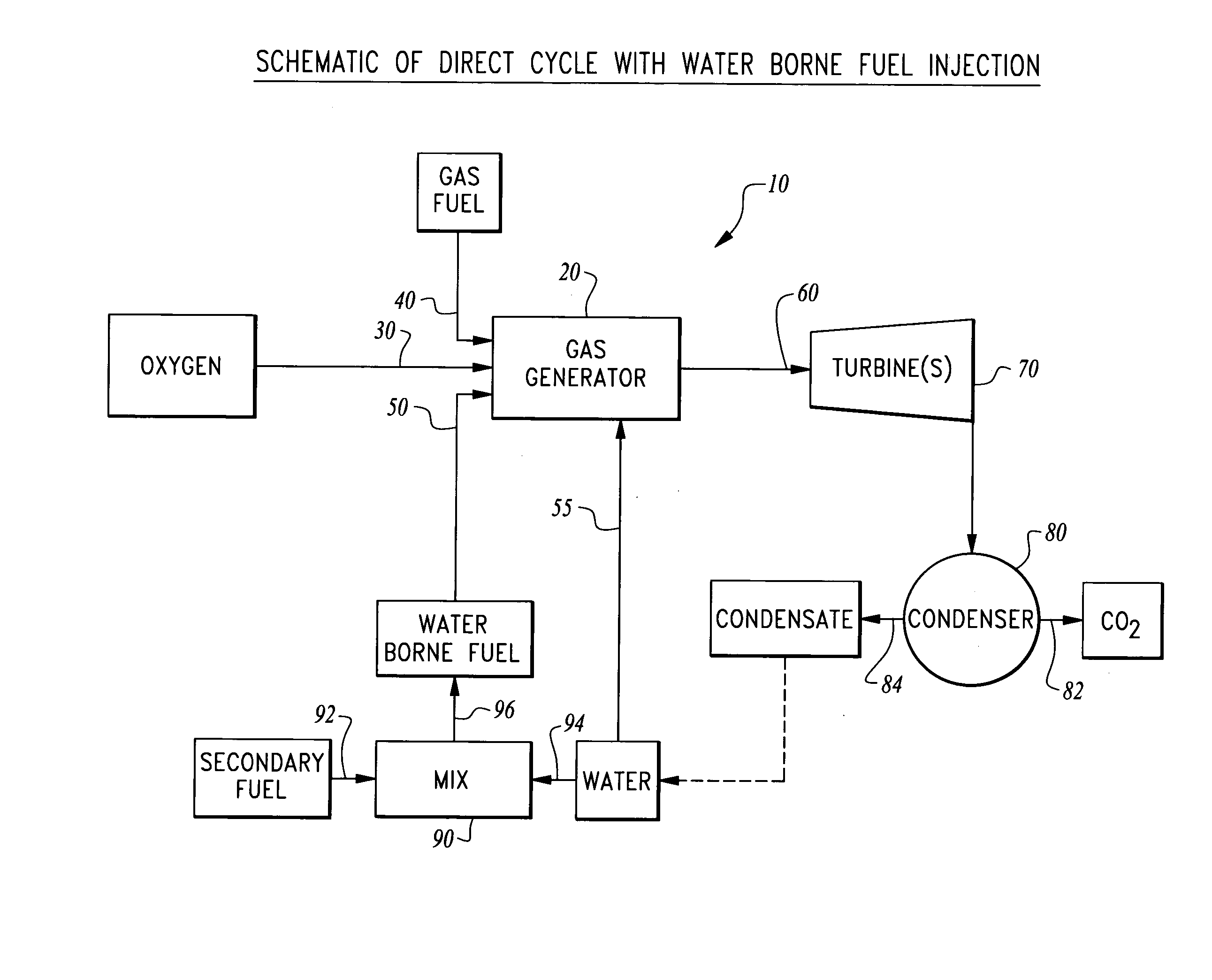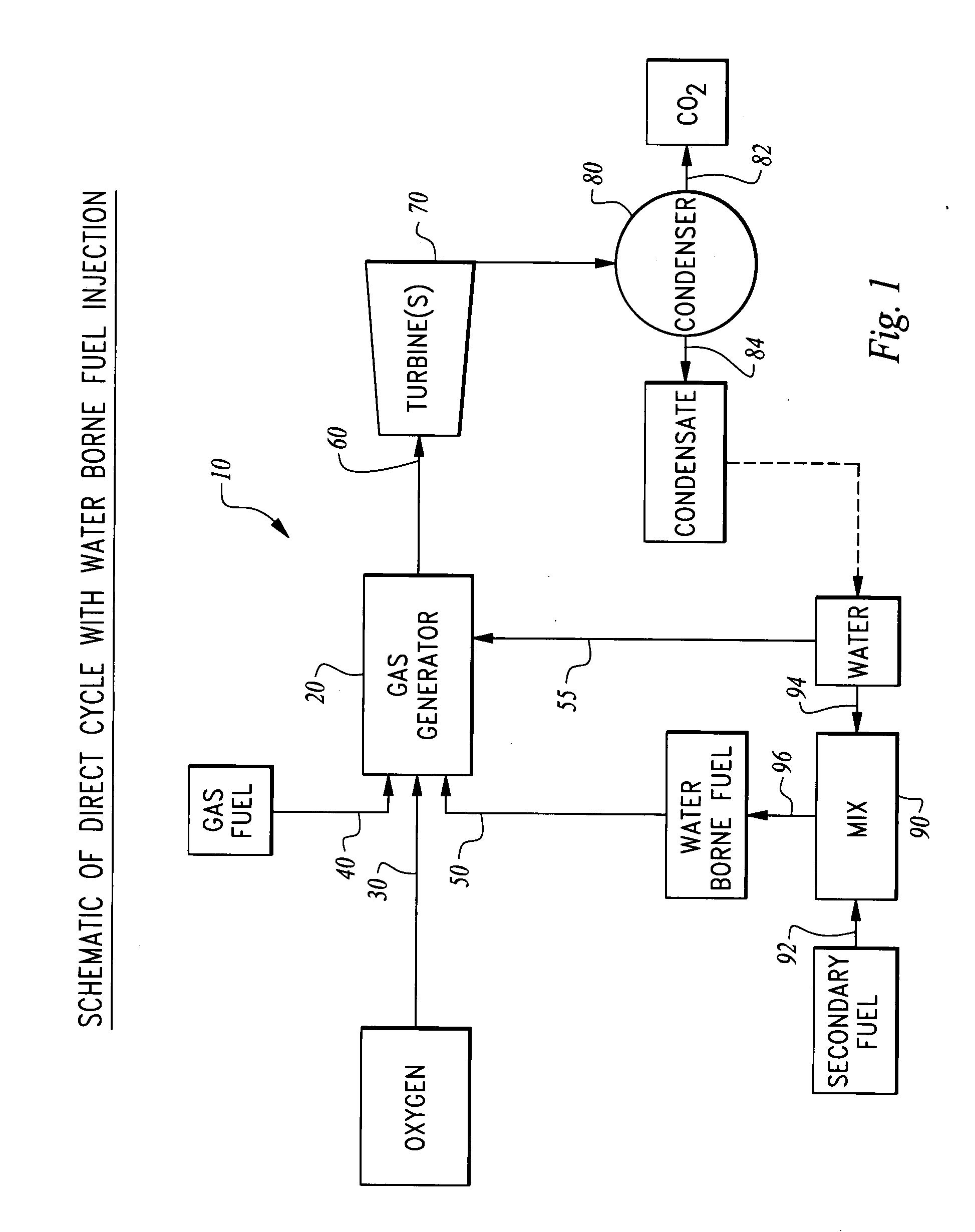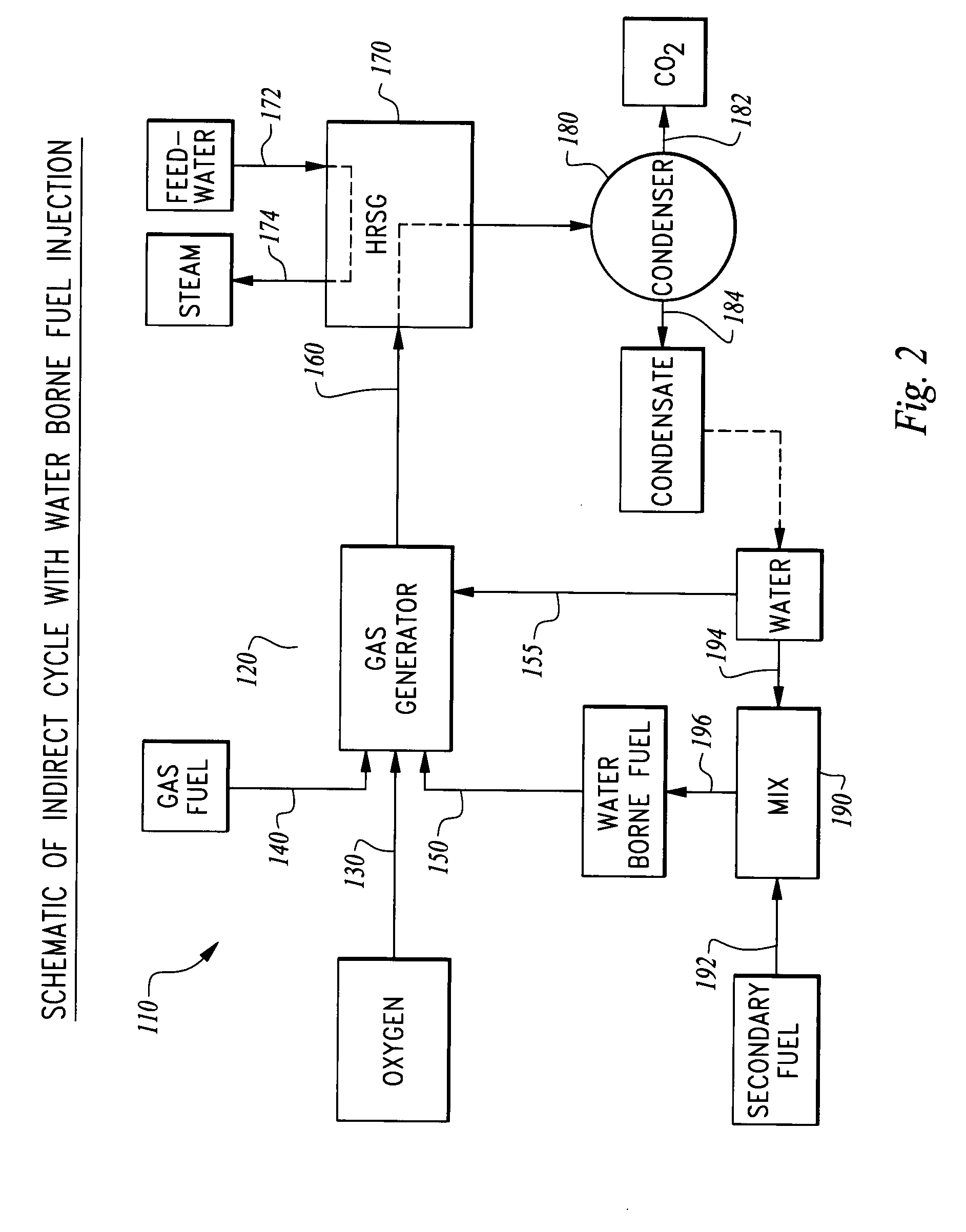Combustion of water borne fuels in an oxy-combustion gas generator
a technology of oxy-combustion gas generator and water borne fuel, which is applied in the direction of engines, machines/engines, mechanical equipment, etc., can solve the problems of limiting the usefulness of liquid fuels, and achieve the effect of avoiding the emission of carbon dioxide or other greenhouse gases
- Summary
- Abstract
- Description
- Claims
- Application Information
AI Technical Summary
Benefits of technology
Problems solved by technology
Method used
Image
Examples
Embodiment Construction
[0031] Referring to the drawings, wherein like reference numerals represent like parts throughout the various drawing figures, reference numeral 10 is directed to a system for power generation through combustion of a water borne fuel with oxygen according to a direct cycle of this invention. Central to the system 10 of this invention is utilization of a gas generator 20 akin to that described in U.S. Pat. No. 6,206,684 incorporated herein by reference in its entirety. With this invention, pathways that would otherwise be utilized for delivery of cooling diluent water into the gas generator 20 have been replaced with a water borne fuel inlet where a water borne fuel provides both cooling and supply of a combustible fuel for combustion within the gas generator 20.
[0032] In essence, and with particular reference to FIG. 1, the basic details of the system 10 of this invention are described. The gas generator 20 is coupled to an oxygen inlet 30 coupled to a source of oxygen. A gaseous f...
PUM
 Login to View More
Login to View More Abstract
Description
Claims
Application Information
 Login to View More
Login to View More - R&D
- Intellectual Property
- Life Sciences
- Materials
- Tech Scout
- Unparalleled Data Quality
- Higher Quality Content
- 60% Fewer Hallucinations
Browse by: Latest US Patents, China's latest patents, Technical Efficacy Thesaurus, Application Domain, Technology Topic, Popular Technical Reports.
© 2025 PatSnap. All rights reserved.Legal|Privacy policy|Modern Slavery Act Transparency Statement|Sitemap|About US| Contact US: help@patsnap.com



